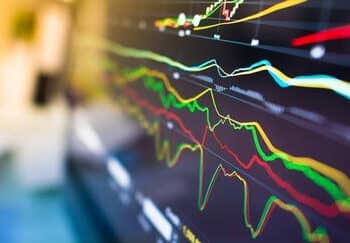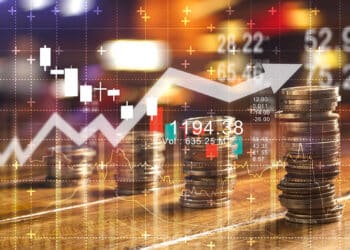ETF provider VanEck has expressed concerns about an editorial published on InvestorDaily this week that questioned whether passive investment strategies will still outperform active management in an environment of rising interest rates.
The editorial was inspired by news of VanEck’s 33rd product launch, a passive bond fund, at a time when active management appears to be making a comeback.
Australia’s sovereign wealth fund recently announced that it is moving back to active management, six years after stating it was “nigh on impossible” for active managers to add value over and above their fees.
Meanwhile, Infinity Asset Management CIO Piers Bolger, who manages $3.2 billion across more than a dozen managed account portfolios for advisers and their clients, believes rising rates have created opportunities for active investing.
“From our perspective, despite the challenges associated with it, rising rates are actually a positive aspect associated with investment management because all of a sudden you do start to see that shift away from one or two asset classes,” he told InvestorDaily.
VanEck rejects ETF ‘myths’
One of the latest passive products to hit the market is VanEck’s 1–3 month US Treasury Bond ETF (ASX: TBIL). Arian Neiron, chief executive officer and managing director VanEck Asia-Pacific, said the new product is the first short-term US Treasury bond ETF of its kind listed on the ASX.
Speaking to InvestorDaily, he explained that the growth of passive strategies has changed the market in terms of investor behaviour but it hasn’t distorted markets.
“Most of the hysteria about ETFs distorting markets are based on myths. Much of the negative focus on ETFs has been written by those who stand to lose the most – active managers,” he said.
“Critics of ETFs point to their growth, saying it will cause a ‘bubble’ indiscriminately pushing up prices. ETFs are growing, from around $10 billion in 2012 to be more than $145 billion now. So, the ‘bubble’ theory sounds like a legitimate concern, until you add context.
History has shown that rebalancing a passive fund can have inflationary impacts on single stocks. For example, on 11 March 2019, ASX-listed Perpetual saw its share price skyrocket by more than 12 per cent for no good reason at all.
As rumours began to swirl, it soon emerged the price jump was the result of the annual rebalancing of the iShares’ International Select Dividend ETF.
Mr Neiron said a common argument among active managers is that ETFs, by just tracking an index, “mindlessly drive up prices” by buying stocks (or bonds) regardless of fundamentals and as a result companies are not being correctly priced.
“Ignoring the fact that there has been example of mispricings, booms and busts since well before passive funds, there has also been a steady stream of examples when a company’s price rises and falls quickly after good or bad announcements or news since the rise of passive funds, as you would expect,” Mr Neiron said.
He pointed to GE as an example of why ETFs don’t distort markets.
“Once the biggest company in the S&P 500, in 2018 GE’s share price plummeted 50 per cent over 10 months even though S&P 500 trackers were attracting huge flows at that time,” he explained.
“This is because other market participants, including active funds, sold them and decreased its size. Passive strategies do not distort the market. Ultimately, fundamentals still matter. Importantly, index strategies are not just market capitalization, smart beta ETFs have almost US$1.3 trillion in assets and invest based on a systematic approach such as factor-based investing.”
VanEck estimates that over 80 per cent of its clients are advised. The group said that it has not experienced any significant outflows recently, but its growth is 12 per cent slower than 2022.
“But the ETF industry’s growth rate has been 21 per cent slower,” Mr Neiron said. “This would be reflective of the wider market, I think.”
Bonds back in vogue
BetaShares revealed earlier this month that fixed income ETFs recorded $371 million in net flows in April, the highest of any asset class.
The Sydney-based ETF manufacturer also published research on the asset gathering track-record of ‘dual class’ active ETFs.
“Strikingly, we find that only 20 per cent of assets in these dual class products are held via CHESS, meaning the bulk of assets have come either from the initial converted assets or via buying in the traditional unlisted managed fund class,” the group said.
BetaShares claims new active ETFs have gathered 75 per cent more CHESS-sponsored assets than ‘dual class’ products and that one of its own products (ASX: HBRD) has almost twice the level of CHESS-sponsored funds under management than its second-biggest product.
“To us this data illustrates that simply launching or converting a fund to be ‘on-exchange’ is no guarantee of asset gathering success in the ETF form and may further indicate the importance of the specialised style of distribution/marketing of ETFs compared to the more traditional distribution strategies of unlisted managed funds,” BetaShares said.
Duration and credit risk
While passive product providers continue to back their own funds, savvy investment managers are looking for opportunities to beat the benchmark.
Infinity Asset Management chief investment officer Piers Bolger told InvestorDaily rising interest rates are recalibrating the way people think about asset allocation and building investment portfolios.
Infinity’s diversified fixed income portfolio has significant positions in managed funds including the JPMorgan Global Strategic Bond Fund (17 per cent), Macquarie True Index Aust Bond Fund (17 per cent), Metrics Direct Income Fund (16 per cent), and Principal Global Credit Opportunities Fund (12 per cent).
“We’ve got an environment where bond yields are anywhere from 4.5 per cent plus, depending on where you are on the curve. That’s equivalent to what you are getting on dividend yields.
“That is allowing you a little bit more flexibility in the context of portfolio positioning. Duration starts to come into play as well in terms of management of fixed income,” he said.
VanEck’s Arian Neiron said that duration is a measure of a bond portfolio’s sensitivity to interest rate changes: “The longer the duration of the portfolio, the more the portfolio value will move when interest rates change,” he said.
“For example, if the duration of a bond portfolio is 4, that means that with a 1 per cent rate rise, the value of the portfolio would fall ~4 per cent. But if the duration is 1, then the portfolio’s value would only fall by ~1 per cent if rates rose 1 per cent. If the benchmark’s duration was 3, and rates did rise 1 per cent, then the portfolio with longer duration, i.e. 4 would underperform the index (and therefore passive funds tracking that index) and the portfolio with a shorter duration, would outperform. The other way passive fixed income funds will outperform is via credit risk.”
While he accepted that active managers with more corporate bonds in their portfolio could outperform in a “risk on” environment, in a “risk-off” environment he believes they will underperform because the safety of government bonds will be more sought after.
“Therefore, while active funds take duration positions different from the benchmark and hold securities different from the benchmark, they will either outperform or underperform passive funds tracking those indices. Because of the higher fees they change, active managers already start the race a few basis points behind.”
The S&P SPIVA Year-End 2022 report shows that 69.2 per cent of Australian Bond Funds underperformed last year, but US-based active managers like Vaughn Nelson believe the days of passive investing are numbered.
Vaughn Nelson CEO Chris Wallis told InvestorDaily those still trying to buy the index could be in for a shock.
“Investors have been lulled into this state of mind where there is zero cost of capital and unlimited liquidity, and everybody gets a participation ribbon,” he said.
“That’s just not going to be the case anymore.”







